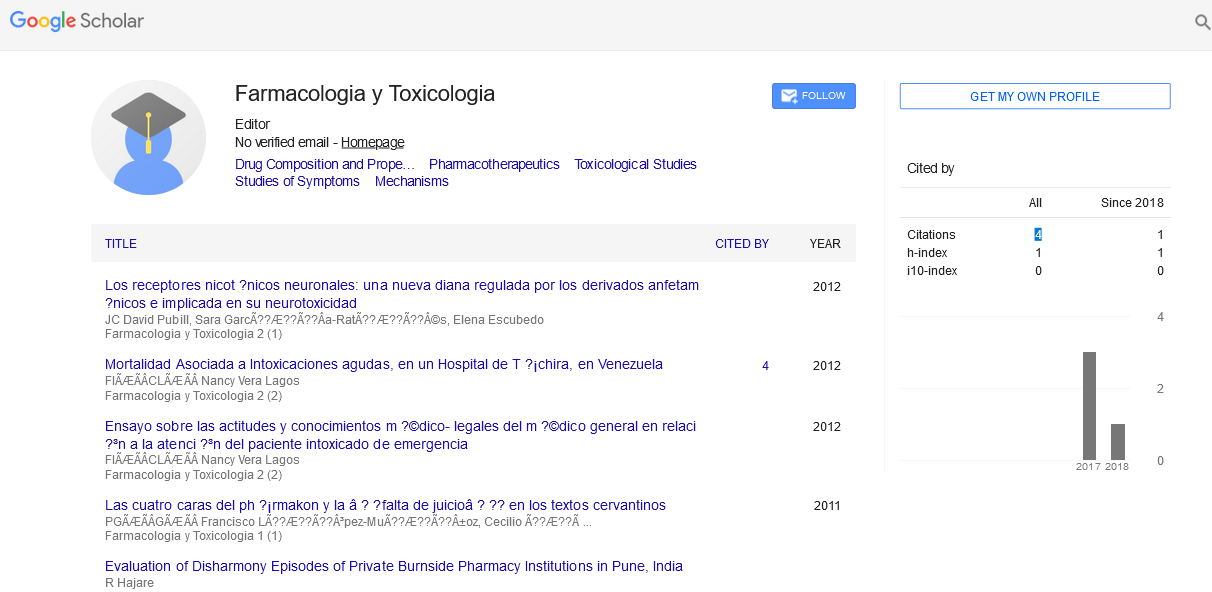Perspective - (2024) Volume 14, Issue 5
Half-Life: The Key to Drug Dosage and Efficacy
Florence Magrangeas*
Department of Pharmacology, University of Lietoral, Dunkirk, France
*Correspondence:
Florence Magrangeas, Department of Pharmacology, University of Lietoral, Dunkirk,
France,
Email:
Received: 07-Aug-2024, Manuscript No. IPFT-24-15131;
Editor assigned: 12-Aug-2024, Pre QC No. IPFT-24-15131 (PQ);
Reviewed: 26-Aug-2024, QC No. IPFT-24-15131;
Revised: 01-Oct-2024, Manuscript No. IPFT-24-15131 (R);
Published:
29-Oct-2024
Introduction
Half-life is a fundamental concept in pharmacology and
medicine that plays a crucial role in determining how often a
drug should be administered to maintain its therapeutic effects
while minimizing side effects. It refers to the time required for
the concentration of a drug in the bloodstream to decrease by
50%. This metric is essential for healthcare providers to design
effective dosing regimens, understand the drug's duration of
action and manage potential drug interactions.
Description
The concept of half-life
The concept of half-life is rooted in exponential decay, a
mathematical principle where the rate of decrease is
proportional to the current amount. In the context of
pharmacology, this means that as a drug is metabolized and
eliminated from the body, its concentration decreases at a rate
proportional to its current level. The half-life of a drug is the
time it takes for the concentration of the drug in the plasma to
fall to half its initial value. This characteristic is intrinsic to the
drug's chemical properties, metabolism and excretion processes.
Factors influencing half-life
Several factors can influence the half-life of a drug, including:
Metabolism: The liver is the primary site for drug metabolism.
Enzymes in the liver, such as those in the cytochrome P450
family, play a significant role in breaking down drugs. Variations
in enzyme activity due to genetic factors, liver disease or drug
interactions can alter the drug’s half-life.
Excretion: The kidneys are the primary organs responsible for
the excretion of drugs and their metabolites. Impaired renal
function can prolong a drug’s half-life by slowing its elimination
from the body.
Volume of distribution (Vd): This parameter reflects how
extensively a drug disperses throughout body tissues relative to
the bloodstream. A large volume of distribution typically results
in a longer half-life because the drug is less concentrated in the
blood and takes longer to be cleared.
Drug formulation: The formulation of a drug (e.g., immediaterelease vs. extended-release) can impact its half-life. Extendedrelease
formulations are designed to release the drug slowly,
which can alter its effective half-life compared to immediaterelease
versions.
Age and weight: Age-related changes in metabolism and renal
function can affect drug half-life. For example, elderly patients
may experience prolonged half-lives for certain drugs due to
decreased liver and kidney function.
Health conditions: Conditions such as liver or kidney disease
can significantly impact the metabolism and excretion of drugs,
thereby affecting their half-lives.
Clinical implications of half-life
Understanding the half-life of a drug is crucial for several
aspects of drug therapy:
Dosing regimens: Half-life determines how often a drug needs
to be administered to maintain its therapeutic effect. Drugs with
a short half-life may require multiple doses throughout the day,
while those with a long half-life may be administered less
frequently.
Steady-state concentration: Repeated dosing of a drug leads
to a steady-state concentration, where the drug’s rate of
administration equals its rate of elimination. Achieving steadystate
concentrations is influenced by the drug's half-life, as it
determines how quickly the drug levels stabilize.
Drug interactions: The half-life of a drug can be affected by
interactions with other substances. For instance, drugs that
inhibit liver enzymes can prolong the half-life of other drugs
metabolized by those enzymes, potentially leading to toxicity.
Drug clearance: Half-life helps in understanding how long a
drug stays in the system after discontinuation. This is important
for avoiding accumulation and toxicity, especially in drugs with
narrow therapeutic windows.
Personalized medicine: Variations in drug metabolism among
individuals mean that half-life can vary from person to person.
Personalized medicine takes these variations into account to
optimize dosing regimens for each patient.
Case studies
To illustrate the concept of half-life, consider the following
examples:
Caffeine: Caffeine has a half-life of about 3 to 5 hours in most
adults. This relatively short half-life means that the stimulant
effects of caffeine are relatively brief and the drug must be
consumed regularly to maintain its effects.
Warfarin: Warfarin, an anticoagulant, has a half-life of about
20 to 60 hours. This long half-life means that it takes several
days to reach steady-state levels and several days for the drug to
be cleared from the body after discontinuation. This extended
duration of action requires careful monitoring to avoid bleeding
complications.
Acetaminophen: Acetaminophen has a half-life of about 2 to 3
hours. Due to its short half-life, it is typically dosed every 4 to 6
hours, ensuring consistent pain relief and fever reduction.
Conclusion
The half-life of a drug is a vital pharmacokinetic parameter
that influences dosing schedules, therapeutic efficacy and the
potential for drug interactions. By understanding the half-life,
healthcare providers can make informed decisions about how to
optimize drug therapy for individual patients, ensuring that
medications are both effective and safe. As our understanding of
pharmacology continues to evolve, incorporating knowledge
about drug half-life will remain essential for advancing patient
care and developing new therapeutic strategies.
Citation: Magrangeas F (2024) Half-Life: The Key to Drug Dosage and Efficacy. Farmacologia Toxicologia, Vol.14 No.5: 046





